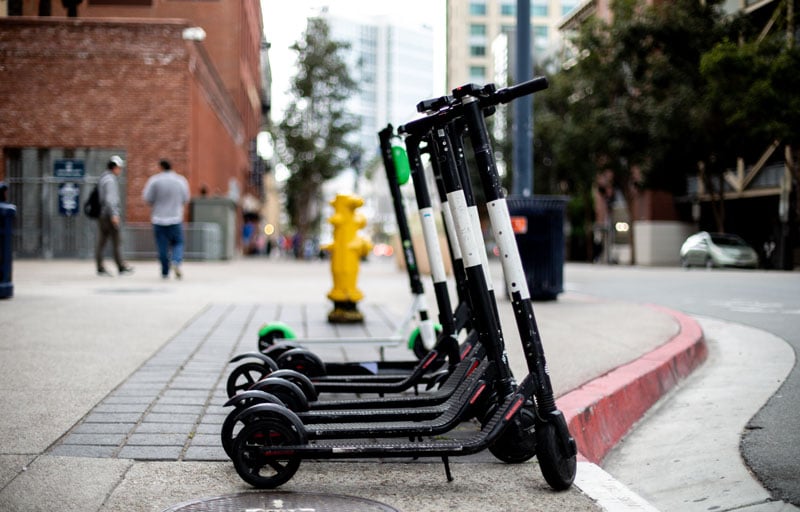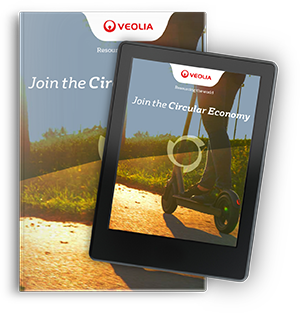Building a circular economy means changing many of the fundamental ways that we do business. This blog post is the second in our series that explains the different models that embody the purpose of the circular economy: to encourage businesses of any size to reduce, reuse and recycle waste.
By becoming more efficient and focusing on gaining the most value possible from goods, resources, and “waste,” we stand a much better chance in the fight for a sustainable future, protecting our limited resources against overexploitation.
Sharing is caring: a circular way forward
Many of the circular business models focus on making production more efficient and less dependent on new, virgin natural resources. They concentrate on converting waste from one process into feedstock or fuel for another or creating fewer products by having multiple customers pay for using goods, instead of paying for the goods themselves. These approaches are extremely important to contribute toward building a more circular economy.
However, there is also a much more basic concept that has contributed greatly to a more efficient, circular system: sharing the products we already own.
Most of us learn to share as children, but what we may not have realized is that embedded in those lessons was an important idea relating to economic efficiency: when you are not using something, someone else can be gaining value from it.
As children with toys, this economic lesson takes the form of letting your friend or sibling use the toy when you aren’t playing with it or when you would rather be using a different toy. The result? More kids are gaining value from the same toy, maximizing its use, and you will probably need fewer toys overall.
The same concepts hold true in the adult real world and make up what we call the sharing platform model.

The Sharing Platform, one circular business model
In our real world economy a Sharing Platform is a circular business model in which a business promotes collaboration among users to increase the usage and value derived from products. This model currently underutilizes assets, whether those assets are skills, products, or spaces, for monetary or non-monetary benefits.
Just as toys sitting unused wastes value and creates the potentially unnecessary need for new toys, so do things we own like cars, houses, and offices. In these situations, sharing platform companies step up to connect the things you own that are underutilized with other people who are willing to pay to use them and take advantage of their residual value.
The primary feature that defines a Sharing Platform business is that the company does not make or own any goods. They simply create the opportunity for consumers to tap into the unused potential of products.
Examples of sharing platforms
In 2020, Sharing Platform business models have become easily recognizable and widespread. Massive advancements in digital technology over the past two decades have facilitated this model and made its implementation easier than ever. Common examples of Sharing Platform approaches include:
- Ridesharing or carsharing instead of owning a car or relying on public transit
- Coworking or when individuals or businesses share the cost of an office by sharing the expenses like rent, utilities, storage, mail, and office supplies with other professionals or companies
- Couchsurfing allows individuals who have houses or apartments to fill unused rooms or even just a couch
- Peer to peer lending helps individuals who have money find those who need it, allowing the former to put unused resources or capital to work

Although very different, each of these types of businesses lets people who own things connect with people who need things but who can’t or don’t want to own them. Companies like Uber or Airbnb are modern examples.
Benefits of a Sharing Platform business model
Similar to other circular business models, implementing a Sharing Platform model creates several key benefits for all parties involved and for society as a whole.
- Owners of goods – Homeowners, car owners, or owners of other goods benefit from sharing platforms because they can receive monetary compensation for allowing others to use their goods or products when they aren’t using them.
- Temporary users of goods – The owners of goods benefit because they can make use of something without the cost of buying and owning it, eliminating overhead costs and ownership responsibilities.
- Sharing platform companies – By connecting the two parties above, sharing platform companies receive a fee for their service and do not need to own or produce the products they “sell."
Why Sharing Platform models are part of the circular solution
We are at the beginning of a major shift towards a circular business model that is more sharing oriented. Making this conversion will help ensure our economy is as efficient as possible, serves customers best, and reduces our dependence on new resources. This model optimizes the use of existing products instead of focusing on creating new ones, leading to a more sustainable use of materials. It also greatly lowers the operating costs for companies that adopt it.
It’s imperative that we all work together to determine the best ways of developing solutions for our current more wasteful approaches toward how we are using products. We need to create ways to reduce or eliminate our dependence on virgin resources that become our standard ways of operating going forward, to reduce concerns about resources disappearing or becoming prohibitively expensive.



